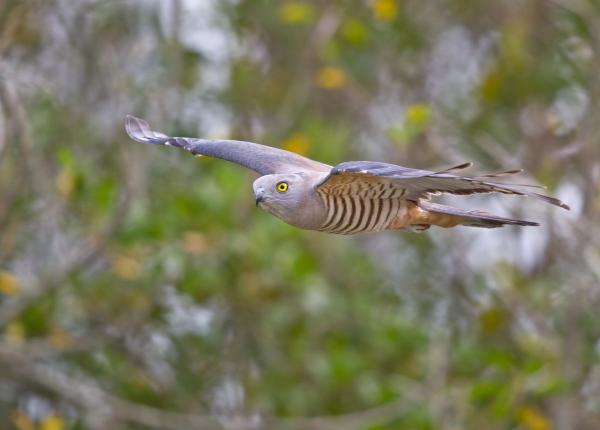Did You Know?
- There are at least thirteen recognized subspecies of Pacific Baza
- Pacific Baza is known by a few other names including Crested Baza, Crested Hawk, Crested Lizard-hawk, Lizard Hawk, Pacific Cuckoo-falcon, and Pacific Lizard-hawk
- This species is omnivorous - meaning it eats both animals and plants!
How The Peregrine Fund is Helping
Though The Peregrine Fund doesn't work directly with Pacific Baza, our efforts in scientific research, habitat conservation, education, and community development help conserve raptors around the world. We also supply literature to researchers from our avian research library, which helps scientists the world over gather and share important information on raptor conservation. We also run the Global Raptor Impact Network which gives raptor researchers tools to more efficiently conduct their own studies while contributing to a global program. GRIN also provides citizen scientists a way to participate in raptor science and conservation.
Where They Live
This lovely raptor is found throughout much of Australasia, including in Australia, New Guinea, the Bismarck Archipelago, and the Solomon Islands. It makes its home in a variety of different habitats. It can be found perched or soaring along edges of primary forest, in forest clearings, in second-growth forests, in scrub habitats, in mangroves, savannas, swamp forest, in tropical and warm temperate forests and woodlands near water, in wooded urban habitats, and even in suburban gardens, particularly in winter.
What They Do
These striking birds have pale yellow eyes, a light gray head, and dramatic cream and reddish-brown bars across the breast. This bird can often be perching conspicuously in trees with little or no foliage, or soaring above the canopy. Researchers have described this bird as "conspicuous." It spends time alone or in pairs, but sometimes it can be seen in flocks of around 20 birds, particularly in September and October on its way from wintering to breeding areas.
Why They Need our Help
This species is categorized as Least Concern, which means that conservationists aren't too worried about the future of this species. In fact, it might benefit somewhat when forests are cleared, since it seems to prefer forest edge habitat. However, this species is not found in areas that have been entirely or heavily cleared.
What They Eat
The Pacific Baza has quite a varied diet. Researchers have documented it feeding on a number of vertebrate and invertebrate species. While it probably feeds mostly on insects such as grasshoppers, stick insects, and caterpillars, it has also been documented to feed on tree-frogs, snakes, lizards, small nestlings and birds. This species is also known to feed on small fruits, such as figs! It employs a number of foraging techniques. It might Fly quietly from tree to tree high in the canopy in search of food, or plunge into vegetation after something tasty to eat. It has been observed capturing insects in the air and on the ground.
Nests, Eggs, and Young
During courtship, Pacific Bazas will participate in some beautiful displays of undulating flights, aerial rolls, and chases. When it is time to build the nest, this species will often choose the canopy of a well-concealed tree in which to construct the platform structure. They build their nests out of live and dead sticks and twigs, and they will line them with green leaves. Females lay between 2 or 3 eggs, occasionally 4. Both the male and female will take turns incubating the eggs for the next 29 days, or so. They will sit on the eggs, carefully turning them occasionally, to make sure that the embryos inside are developing into healthy nestlings. When the young hatch, they are covered in fluffy white down. Both the male and female will care for the young birds - brooding them, bringing them food and feeding them! And this is a good thing because the nestlings will develop quickly. After around 32-35 days or so, they will be ready to fly from the nest for the first time.
Pacific Baza and the World Center for Birds of Prey
Though Pacific Bazas don't live anywhere near Boise, Idaho, the World Center for Birds of Prey is a great place to learn about this species or other birds of prey. The center offers fun ways to learn about birds of prey including interactive activities, tours, interesting videos and a children's room with activities from coloring sheets to quizzes to costumes. We also have knowledgeable, on-site staff to answer any questions you may have about Pacific Baza or any other bird of prey.
References:
Debus, S. and G. M. Kirwan (2020). Pacific Baza (Aviceda subcristata), version 1.0. In Birds of the World (J. del Hoyo, A. Elliott, J. Sargatal, D. A. Christie, and E. de Juana, Editors). Cornell Lab of Ornithology, Ithaca, NY, USA. https://doi.org/10.2173/bow.pacbaz1.01
Global Raptor Information Network. 2022. Species account: Pacific Baza Aviceda subcristata. Downloaded from http://www.globalraptors.org on 26 Jul. 2022










